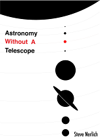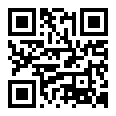Reader contributions
Cheap astronomers unite
Cheap Astronomy’s call for contributions on topics related to the standard, themes and goals of this website has been met with an overwhelming (i.e. more than one) response.
Video-bloggery
Apparently there’s something called a blog, where you write a lot of stuff and hope someone reads it and if you added some new-fangled notion called video—kind of like a podcast except you can see it. And if you combined those two things you’d have what some may call videojug.
Cheap research
Anonymous wrote in to challenge the notion that it was unlikely anyone with cheap astronomy gear would “Make a significant contribution to astronomical research (unless you are absurdly lucky)”—see Cheap telescopes. Apparently, an inexpensive set of 7x50mm binoculars is quite sufficient to contribute to variable star observation projects (see here). Thanks Anonymous, the Fun with binoculars page has been updated with this very advice.
Explore the universe on a paper plate
Chuck wrote in with a link to Paper Plate Education, a superb resource offering a myriad of cheap astronomy outreach projects—the Platisphere and Platitarium particularly impressed. Some general science topics, notably plate tectonics, are also covered. Wonderful.
An eye for an eyepiece
Jay supported the view that if cheap telescope owners wanted to spend any extra cash, a cheap Plossl lens was probably the area of wisest investment (see here). Jay cited a number of brand names that we can’t reproduce here, though those sub-$50 lenses named after that big nebula thingy sounded pretty good. Jay ended with a heart-felt statement that captures the true spirit of Cheap Astronomy.
“I just feel that on many amateur boards there is so much emphasis on getting more expensive eyepieces that people often forget that most beginners and even some people who have been in the hobby for a while and want or need to control cost can have a wonderful experience without breaking the bank”
Right there with you Jay.
We are not alone
Michael, who apparently lives on that mirror planet Earth orbiting the sun at Lagrangian Point 3, wrote in about his nifty website called Frugal Astronomy, which is about exploring the universe on a tight budget and has a webpage layout with a black background. Spooky. Still, the site has an enviable title and the Mark Twain quote is enough to make a visit worthwhile. It’s been running several months longer than Cheap Astronomy—so a nice example of convergent evolution.
Scrap yard astronomy
Bill from bonnie Scotland provided a picture of his six inch Dobsonian telescope, made from bits of stained plywood. While it all looks like way too much effort for Cheap Astronomy—the general spirit of penny-pinching and compromise is commendable. Bill reports he made the mirror himself from some old plate glass—and the finder scope and Plossl viewer were adapted from a genuine cheap department store telescope. Bill has also provided an excellent example of cheap astrophotography, involving sticking a camera up to the eyepiece and hoping for the best. Great stuff—thanks Bill!
What’s up with Vernon
Cheap Astronomy’s vision of a World Wide Cheap Astronomy Network comes one step closer with a weekly report from Vernon Whetstone on what them there northern hemispherites can see up in the night sky.
Looks but cannot see
John wrote in with a link to some 3d glasses on sale in Australia and available internationally, useful for looking at anaglyphs—for example at the Mars Reconnaissance Orbiter site. And the good news—they’re cheap.
Astronomy is kind of universal
Stephen drew our attention to Astronomy for Everyone which includes a videocast by the good folk at Lincoln Park High School observatory doing what they do—and doing it earnestly. You can never have too many binoculars.
Ye olde tyme cheap telescopy
Frank says: When I was a kid (over 1/2 century ago: damn! I’ve become a real old geezer) there was a low cost set of lenses advertised to make a cheap telescope using the cardboard tube Linoleum (floor covering material) was wrapped around. The objective lens was very long focal length and 2 to 3 inches in diameter. The rest of the lenses were for eyepiece use. Of course, the objective wasn’t color corrected and when viewed from the side showed a distinctly green color. However, even without an eyepiece the long focal length allowed craters on the moon to be seen and possibly Jupiters’ moons.
In those days advertisers could get away with a lot, and the claims of high power were beyond any reasonable expectation given the lack of color correction. That brings up the issue of “the first cheap appochromat”, which is another story.
World wide Cheap Astronomy network
It’s begun! See here for Cheap Astronomy in Belorussian (thanks Patricia!), which is what they speak in Belarus.




